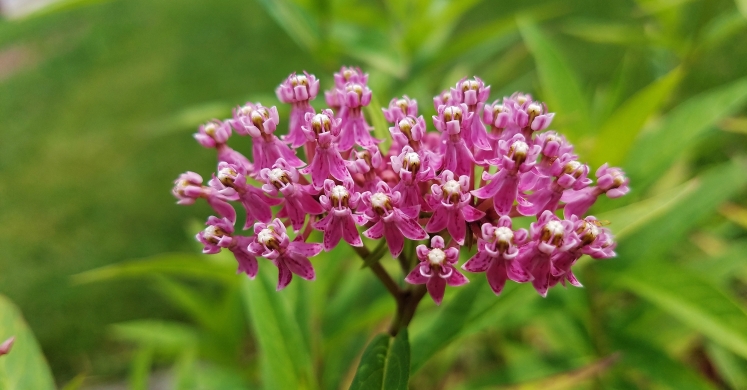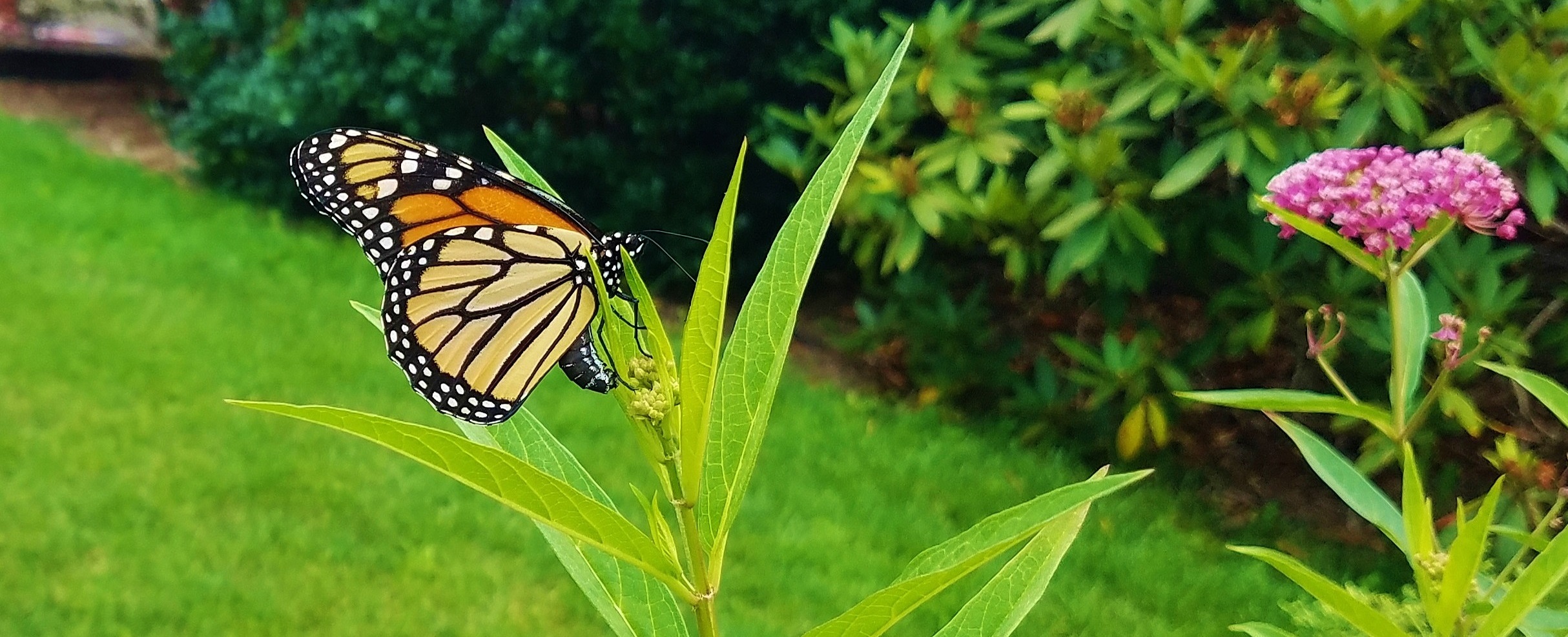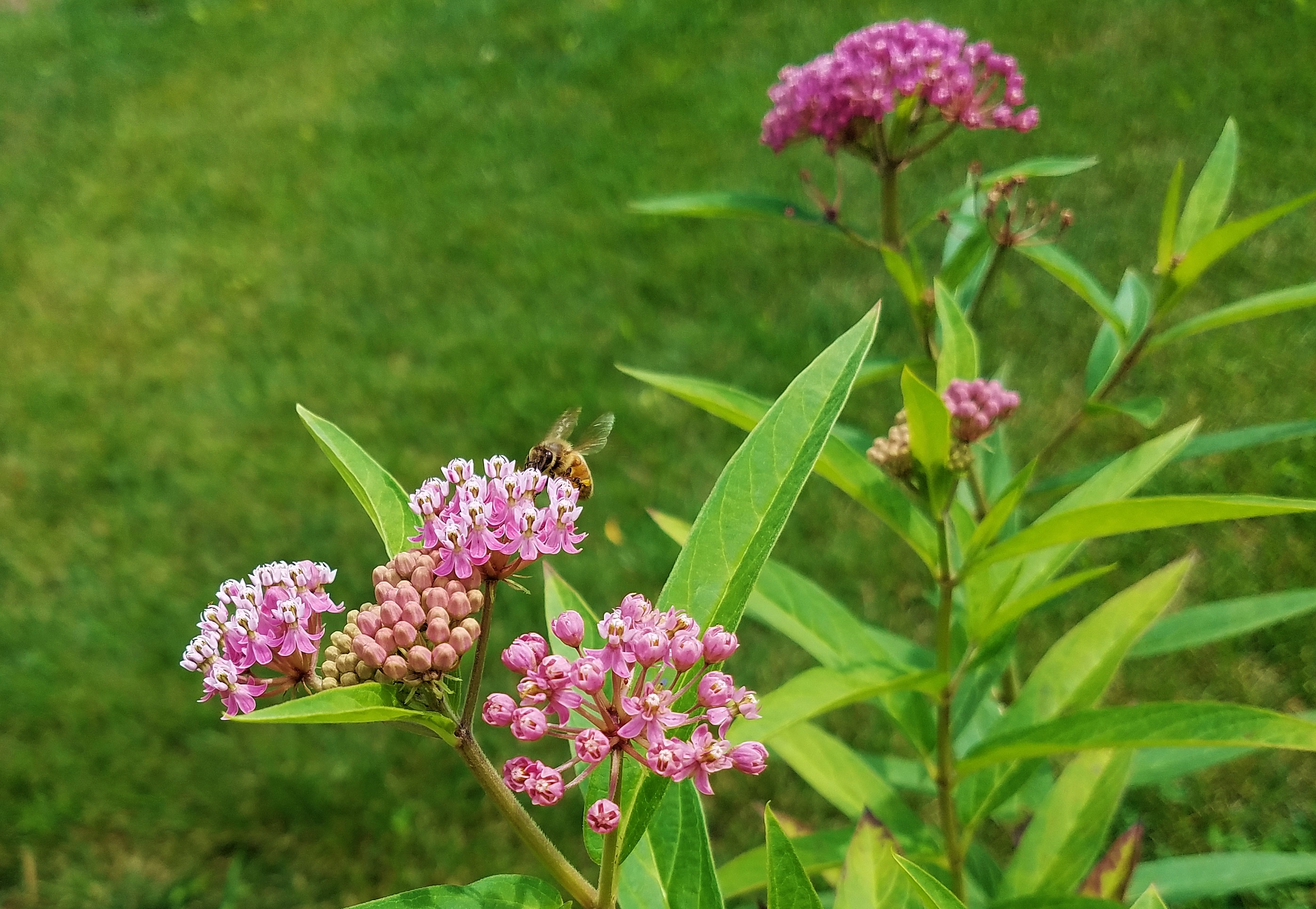Blog

#bioPGH Blog: Milkweed
 A resource of Biophilia: Pittsburgh, #bioPGH is a weekly blog and social media series that aims to encourage both children and adults to reconnect with nature and enjoy what each of our distinctive seasons has to offer.
A resource of Biophilia: Pittsburgh, #bioPGH is a weekly blog and social media series that aims to encourage both children and adults to reconnect with nature and enjoy what each of our distinctive seasons has to offer.
This weekend while visiting family in Penn Hills, I had the pleasure of noting variety of pollinators visiting a patch of the yard with milkweed! Honeybees, sweat bees, bumble bees, and a visiting monarch all made appearances in my short pause to take a look at the flowers. Milkweed is a showy native perennial that, once established, can be the perfect long-lasting addition to your pollinator garden. Let’s explore a bit more!
Milkweed (Asclepias sp.) is a common name that includes over a hundred different species in North and South America, plus numerous cultivars. In Pennsylvania, we are most familiar with species like common milkweed (Asclepias syriaca) and swamp milkweed (A. incarnata), which can range from 3-5 feet tall, and their flowers are arranged in clusters called “umbels.” The flowers eventually give way to large, distinctive seed pods full of fluffy seeds. In the past, milkweed had been labelled as an undesirable plant because most milkweeds do produce a “milky” sap that tastes unpleasant and can be harmful in large quantities. However, there is no need for concern if you keep in mind where you are planting—the USFWS has tips here.
One of the reasons many of us are familiar with milkweed is because it is a host plant for monarch butterflies. Monarchs don’t lay their eggs anywhere but on the leaves of milkweed, and when those eggs hatch, the caterpillars feed exclusively on milkweed leaves. This is advantageous for monarch caterpillars—they can tolerate the bitter sap of milkweed, and their diet offers them a layer of protection from predation as they become mildly toxic themselves. Beyond monarchs, though, milkweed is a favorite plant of many pollinators and can attract a variety of beneficial bugs.

Given milkweed’s vital role in the ecosystem, and the attractiveness of its blooms, milkweed makes a great addition to a home garden. Swamp milkweed was even one of Phipps’ 2019 Top 10 Sustainable Plants. As with any plant, you just have to keep in mind what your garden needs are and what you are envisioning for the space. Swamp milkweed, for example, grows particularly well in damp soils and wetlands, and is excellent for rain gardens. Common milkweed, on the other hand, is slightly more tolerant of drier soils. Butterfly milkweed (A. tuberosa, also just called butterfly weed), though, is the drought-tolerant beauty that can add a splash of bright orange to a garden space while also providing food for local pollinators. The preferred food source for monarchs is the common milkweed, but they will also take advantage of swamp milkweed when it’s available.
If milkweed inspires you towards pollinator gardening, check out our Greener Gardening Guide for other ways to keep your garden looking fabulous while helping our one and only home – the environment!

Connecting to the Outdoors Tip: If you are interested in including some milkweed in your own garden, you can find some at the Audubon’s Beechwood Farms nursery, which specializes in native plants.
Resources
USDA Forest Service – Milkweed
National Wildlife Federation – Milkweed
USDA Forest Service – Butterfly Milkweed
Photo Credits: All photos by Maria Wheeler-Dubas

